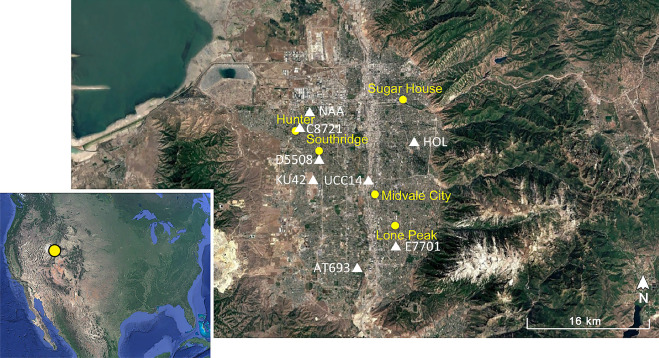Chula joins hands with the Thai Health Promotion Foundation (ThaiHealth) to design “Walkable City” using the GoodWalk Score as the criteria for selecting the pilot area to be developed as Walkable City in Bangkok as well as many cities around the country. The plan is to help reduce pollution, revitalize tourism, and the local economy while enhancing the quality of life and health for city dwellers.
Tag: City Planning
A movement to reclaim urban waters? River Seine cleanup shows perks
Paris is embarking on a costly cleanup of its iconic, yet long toxic, River Seine — aiming to make it suitable for swimming ahead of the 2024 Paris Olympics. French officials hope the Seine cleanup will inspire other cities to…

Media Invited to Explore Urban Acoustics with a ‘Sound Walk’ of Nashville #ASA183
The 183rd ASA Meeting will include an urban sound walk, in which media are invited to explore Nashville, its sounds, and efforts to design projects that enhance the sonic environment and mitigate noise. Following the walk, ASA will host a workshop on soundscape design and how planning can be used to create sustainable, walkable, livable urban environments. The walk is an opportunity for media and anyone interested in urban soundscapes, while the workshop is intended for city planners, architects, officials, and others whose work lies on the interface between sound and the community. All are welcome.

Novel atlas shows vast urban infrastructure divide between Global South and Global North
New data from an international research team adds another dimension – literally – to understanding the economic and environmental impacts of how cities are built. Using satellite mapping, researchers measured the height of built-up infrastructure in urban areas across the globe, which could improve projections of energy use and emissions and inform city planning and economic development efforts, including progression toward the United Nations sustainable development goals.
Multi-story buildings made of wood sell for 9% more than other construction in Helsinki
Building more homes and buildings with wood has been on the radar for years as a way to offset carbon emissions, though construction companies have been hesitant to take the material in broader use. A study at Aalto University in Finland is now the first to show that building with wood can be a sound investment.
New sustainable building simulation method points to the future of design
A team from Cornell University’s Environmental Systems Lab has put forth a new framework for injecting as much information as possible into the pre-design and early design phases of a building project, potentially saving architects and design teams time and money down the road.
Building cities with wood would store half of cement industry’s current carbon emissions
Shifting to wood as a building construction material would significantly reduce the environmental impact of building construction. If 80% of new residential buildings in Europe were made of wood inside and out, they would store the equivalent of about half of the cement industry’s annual emissions.

The rise of ‘Zoom Towns’ in the rural west
COVID-19 has expedited a trend of migration into western gateway communities—remote workers are fleeing cities to ride out the pandemic. A new study using data from 2018 found that growing populations caused urgent planning pressures, and officials felt unprepared to respond to and prepare for problems associated with rapid growth.

Trees and lawns beat the heat
To mitigate heat in light of climate change, city planners are replacing artificial surfaces with vegetation cover. In water-limited regions, they have to balance the benefit of cooler temperatures with conserving water. A University of Utah study found that mixed landscapes are the best way to mitigate the heat island effect in semi-arid regions.
How a few negative online reviews early on can hurt a restaurant
Just a few negative online restaurant reviews can determine early on how many reviews a restaurant receives long-term, a new study has found.
It’s a beautiful day in the neighborhood … or is it?
Contrary to what many would think, characteristics of your neighborhood have little to do with how satisfied you are with it, Michigan State University research found.